Wow, twelve months now since I started this blog and life saw many ups and downs in this period. But some things remained the same – my quests, my yearnings, the travels, the learnings, the inward tug-of-wars and so on.
So here’s a toast to another chequered year gone by and wishes and prayers for a new one that is around the corner…

Trip to Mahabalipuram
For the second year in a row (read about the 2014 year-end family outing here), we had a family trip away from Bangalore to wind up the year – this time to Mahabalipuram or Mamallapuram, as it is also called, a bustling sea side town 60 kms from Chennai that was once upon a time an important port city of South India.
The town, like Chennai and many other coastal places severely impacted by the devastating floods earlier this month, has sufficiently recovered to welcome back visitors and tourists. There are no signs of the damage wrecked and everywhere it seems to be business as usual. Speaks a lot of the grit of the people (not that we have an option to mope about and drown in sorrow for long. As humans, I think, our indomitable spirit surfaces sooner or later, whether we like it or not)
A cozy retreat
The resort was not so expensive considering the peak holiday season and okay-ish to stay in (they can certainly do a lot better than they are doing now) but was only a stone’s throw from all the exciting places to visit, and more than made up for any inadequacies. More than anything else, the fun time with the 30+ members of our extended family, including the 95 year old matriarch who gamely joined us in all our adventures, was the best thing about the holiday. Fun trips together to the various tourist destinations, temples, shopping spots, beaches, 7D movie shows and the raucous family games are surely memories to cherish.
A quick recap of what we saw below
(we didn’t hire a guide this time, so unfortunately didn’t learn enough about these magnificent masterpieces)
The architectural work in Mamallapuram date back to around 7th century AD, when the powerful Pallava dynasty ruled most of South India with Kanchi as their capital. The Pallavas Kings, Mahendravarman I and Narasimhavarman I, are credited with patronizing arts and commissioned, it is said, many of these stunning monuments – some especially even after repeated failed attempts.
The cave temple-Arjuna’s penance Bas relief
The cave temple is a pillared temple complex, unmatched in its majesty and beauty, and carved out of a giant single rock. Look closely to see the ubiquitous Pallava emblem – The lion, etched on every pillar. This is one of the monuments that the King managed to complete after repeated failures… and how! That it has stood the test of time successfully is proof enough of the Pallava tenacity and persistence.
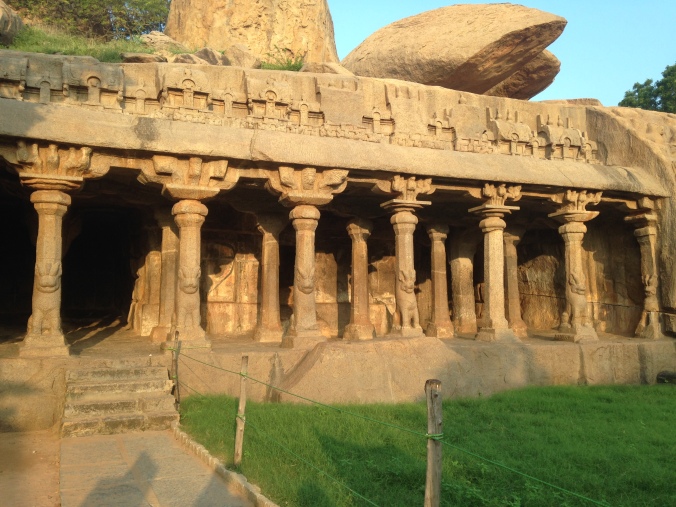
Immediately next to it is a giant openair bas-relief carved on two monolithic rock boulders made of pink granite. Look out for the number of figurines etched on the surface, all characters and tales from the unending Hindu lore.
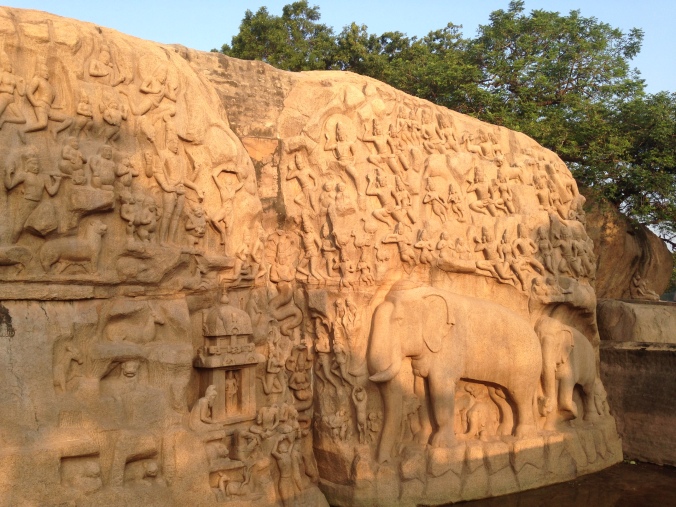
A few meters away from this is the famed Butter Ball (the heavy rock that never rolls down although it appears as if it might, any moment) We saw it from afar but did not have the time to go closer and examine it in detail.
Shore Temple
A UNESCO World Heritage Site, a temple complex whose iconic gopurams have come to represent Mamallapuram today.
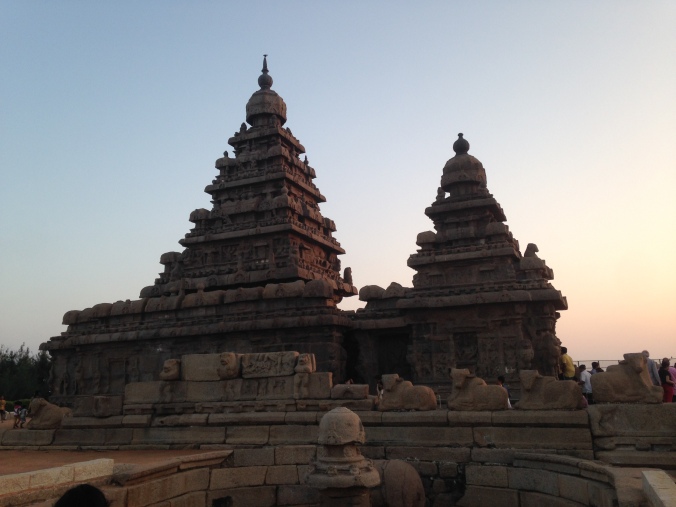
It is said that most of these stunning pieces of Pallava artistry lay hidden beneath mounds of sands until British archaeologists unearthed them and revealed them to the world. Today it hosts a non-functional temple sanctum and ruins. Centuries of enduring harsh winds from the sea and the coarse beach sands (not to mention the millions of tourists that throng the place around the year) have left them ravaged, but with their beauty intact nevertheless.
Pancha-Pandava Rathas
Another shining example of monolithic rock cut architecture of ancient India, this is an assortment of 5 different monoliths in one temple complex, each representing a Pandava prince along with their (common) wife Draupadi.

Nakula Sahadeva Ratha
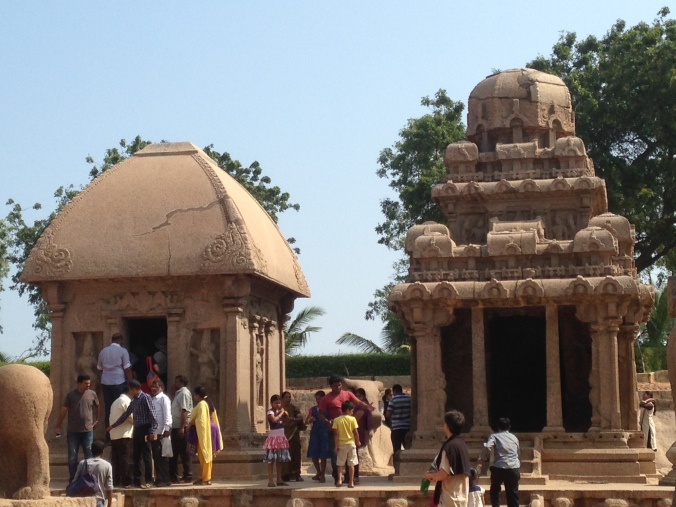
Draupadi Ratha and next to it, Arjuna Ratha
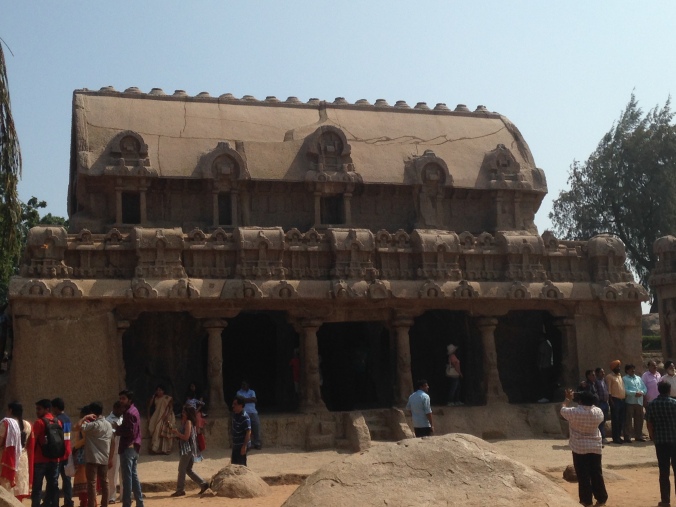
(My Ratha strongest) Bhima Ratha, for the mightiest and biggest of the Princes!

Dharmaraja Ratha, the most elegant for the eldest Prince.
Thirukazhukundram
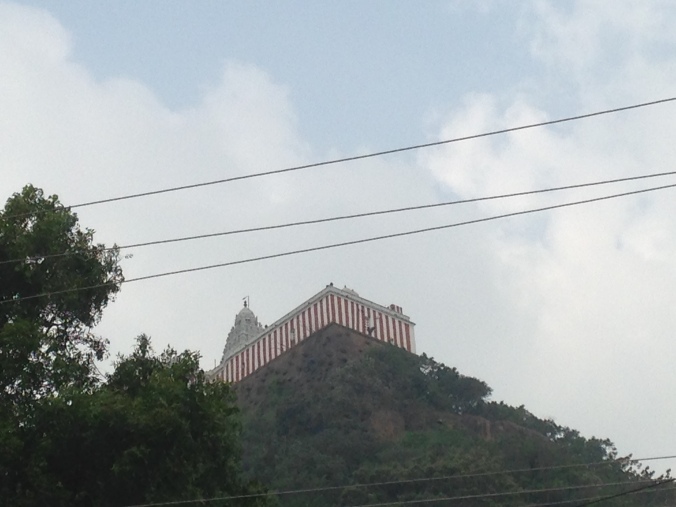
This pilgrim town is known for its temple dedicated to Lord Shiva. This temple precariously sits atop a steep hill (above, in picture) and is at the end of an arduous climb of 560 steps. Not for the unfit, very old or ailing people surely. But if you do manage to make it to the top, you are rewarded with a spectacular darshan of the Lord.
A splendid view of the town from above, along with the view of gopurams of another temple and temple tank. In one word, magnificent!
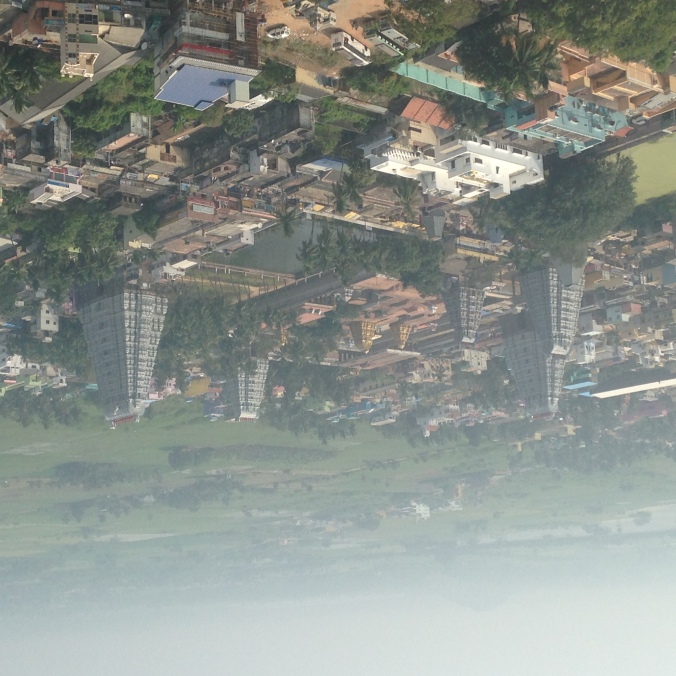
The Beach
How can one write about a coastal town and not mention the alluring, cool waters? We went to the beach adjoining the shore temple to witness in time not just a glorious sunset but also a mesmerizing dawn the next day. Not only that, we were also lucky to capture the radiance of moonlight on the shimmery waters below. Ah… glorious nature!
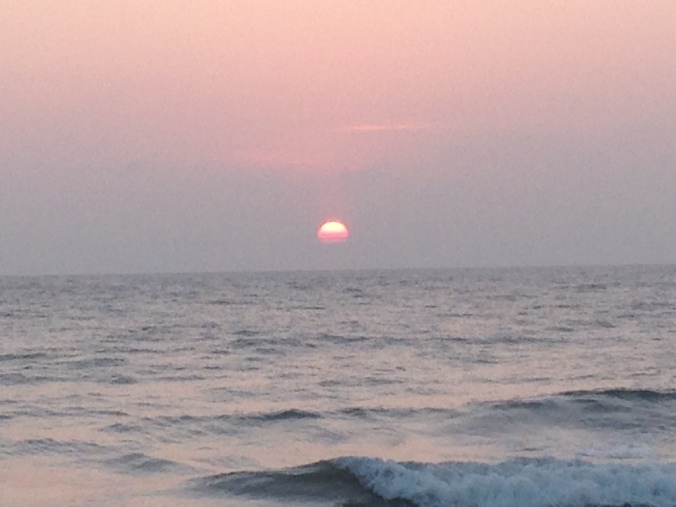
The sun, rising from the waters

The sunset, as witnessed from the Shore Temple
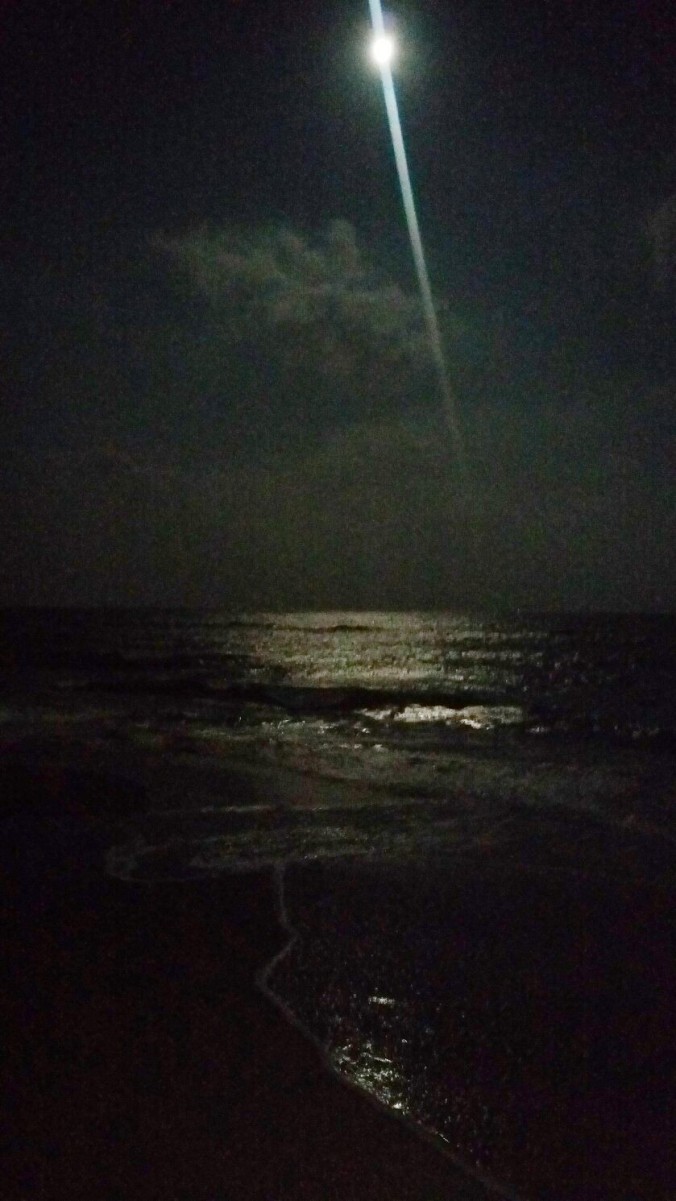
This poor quality picture does no justice to the sheer beauty of the moonlit night, but this is all I have as a memoir from that night
As always, it was a memorable travel that left us wiser and richer for the experience!